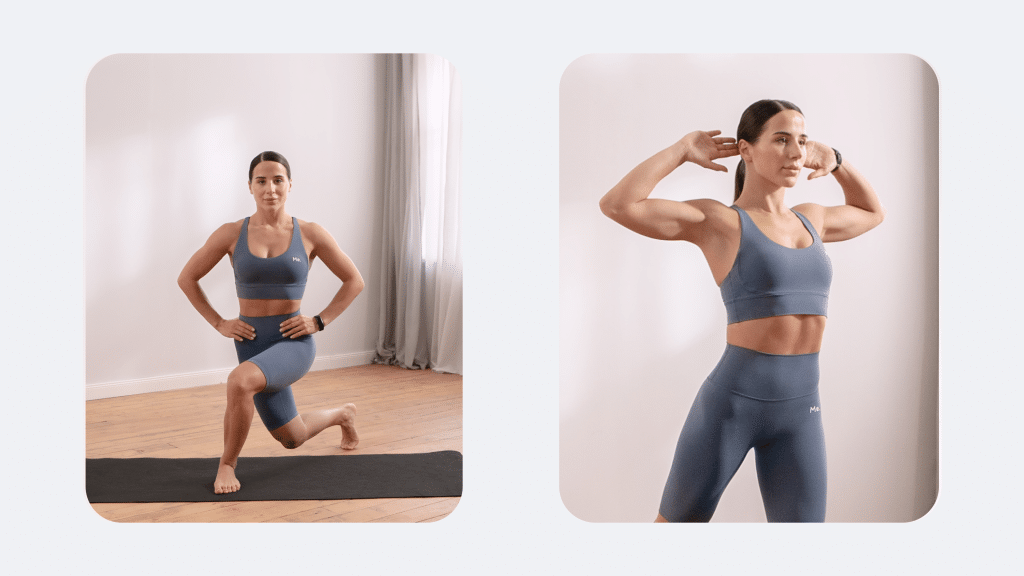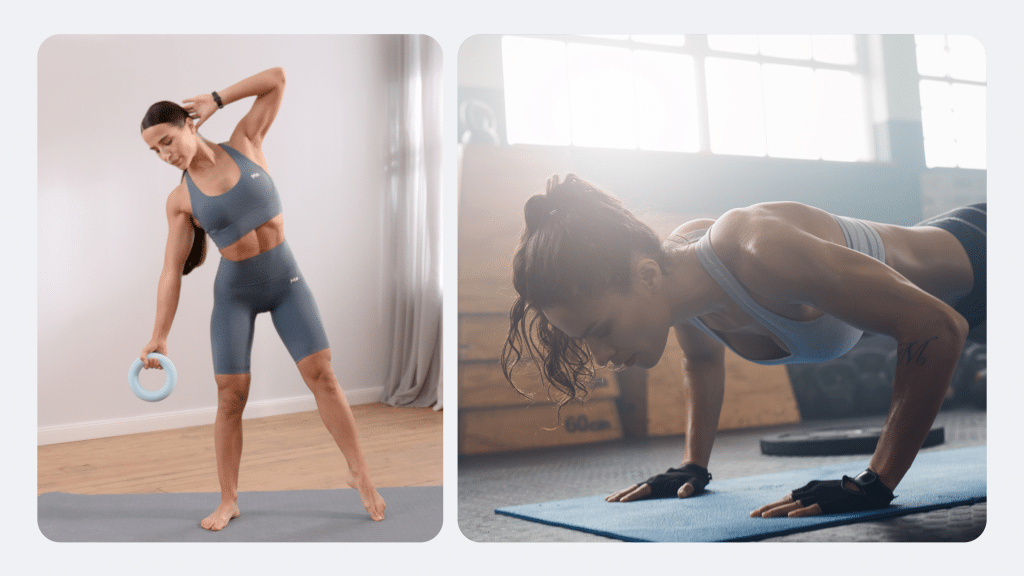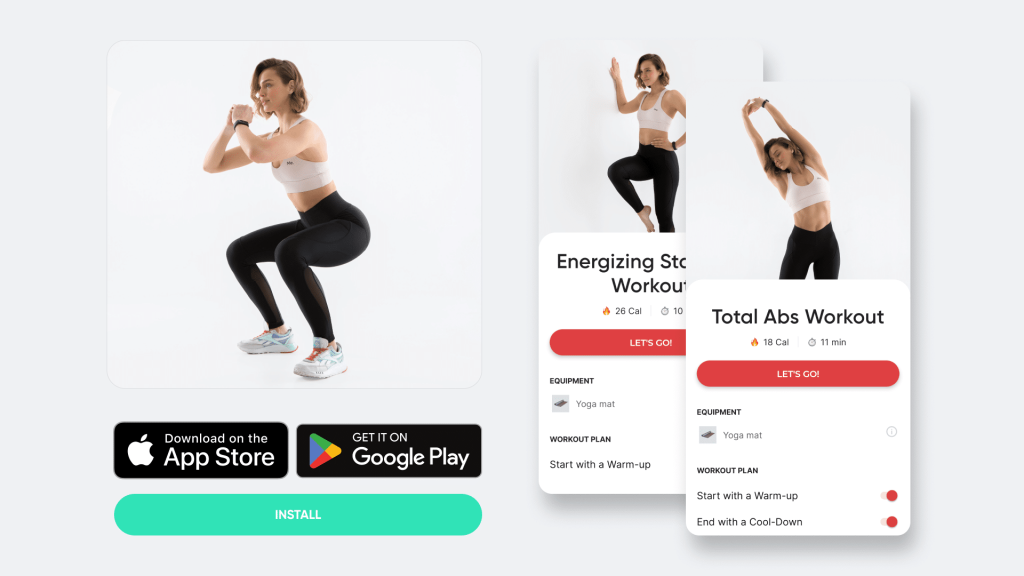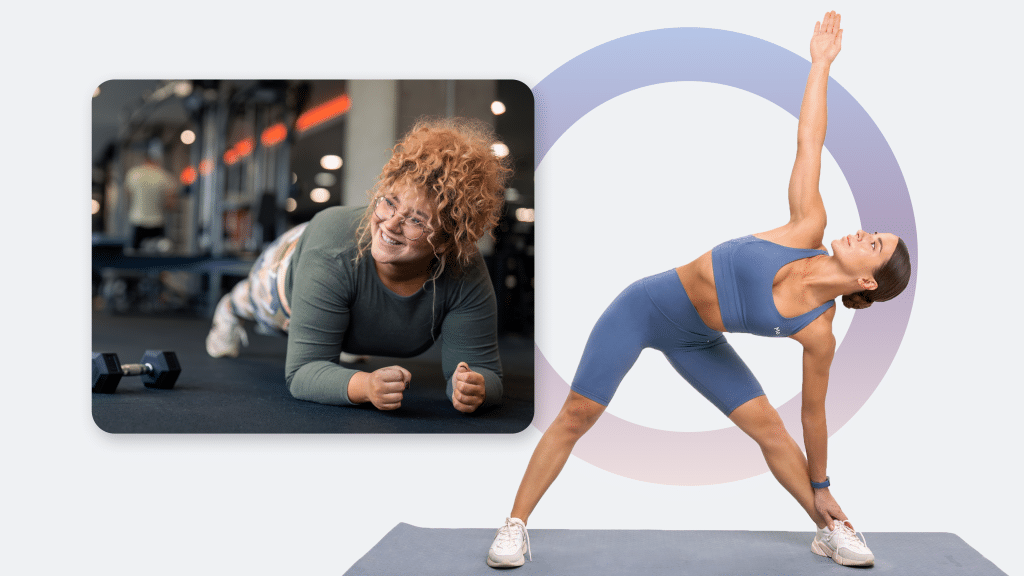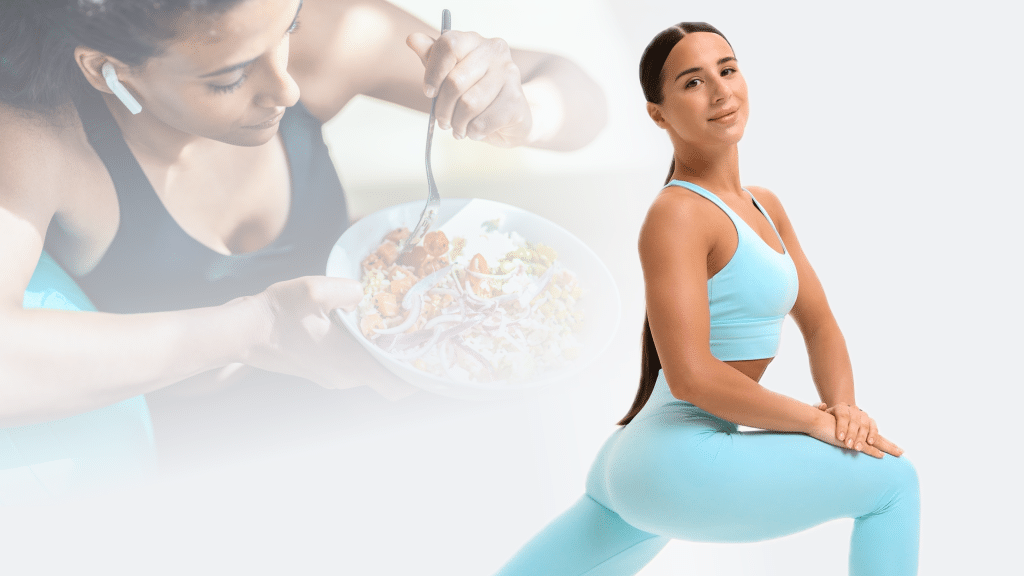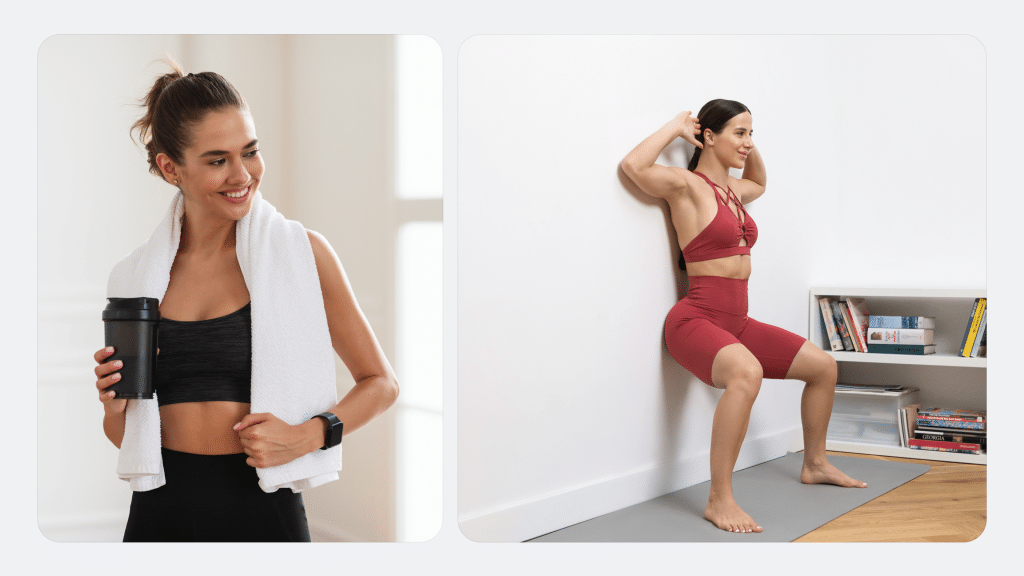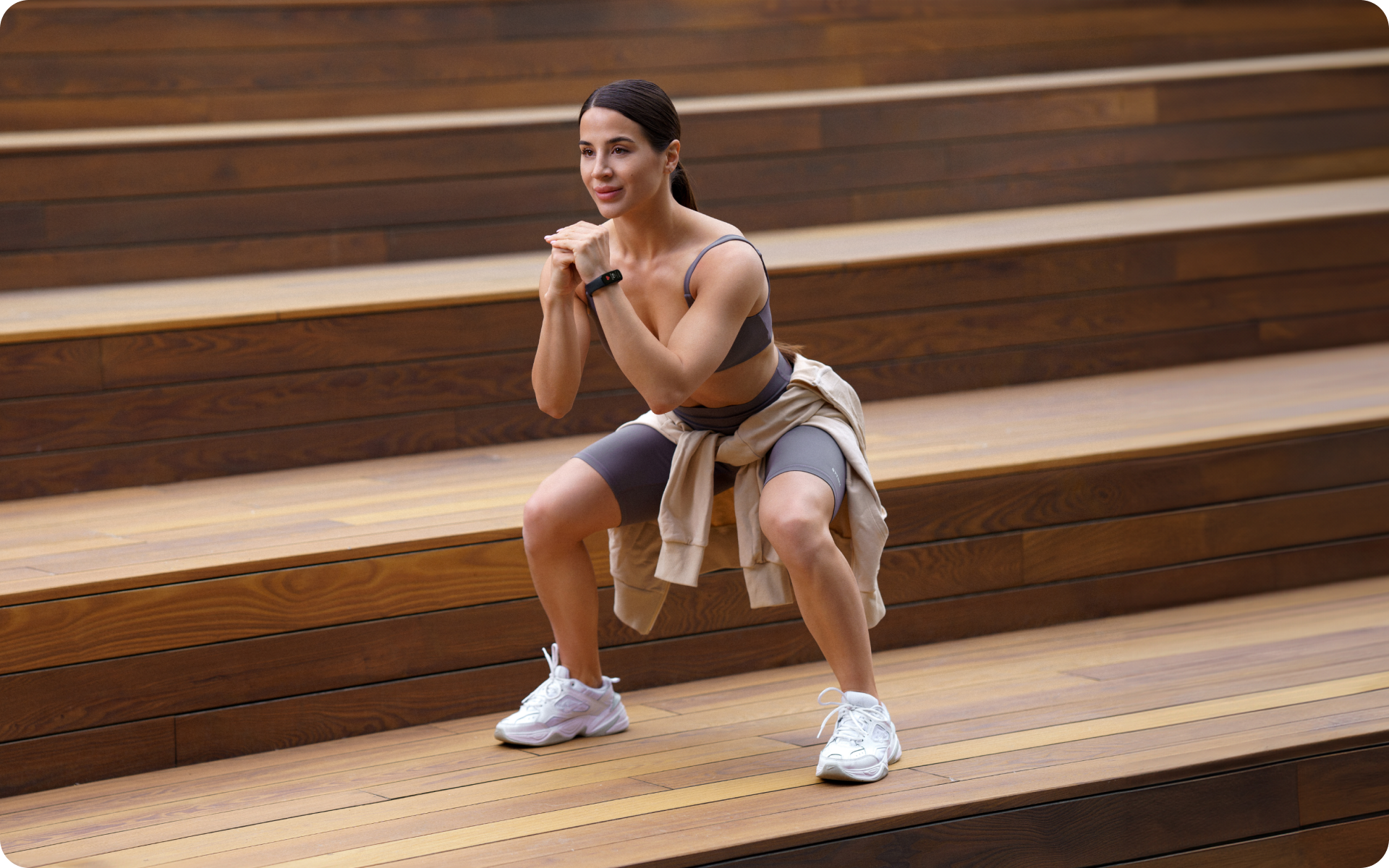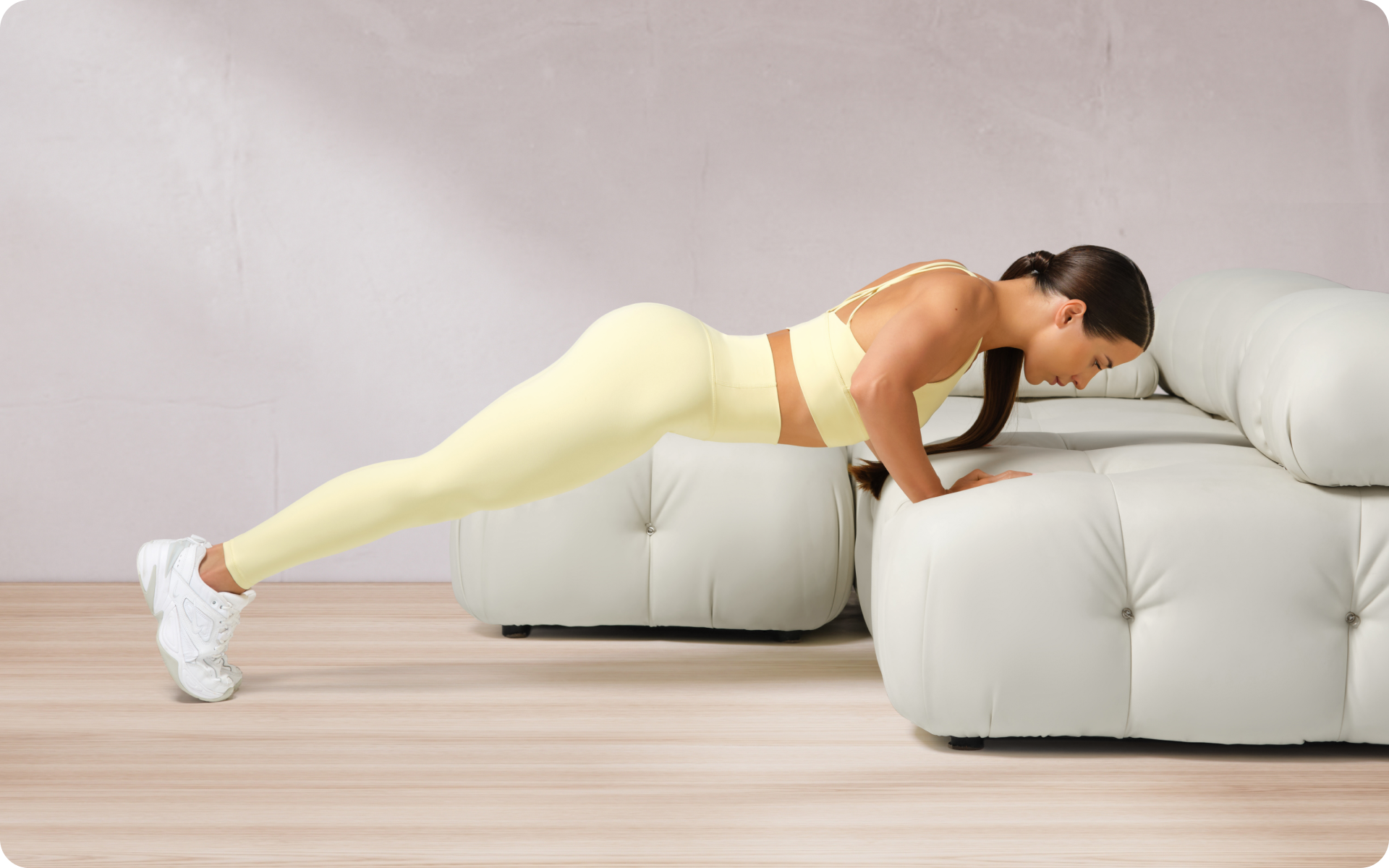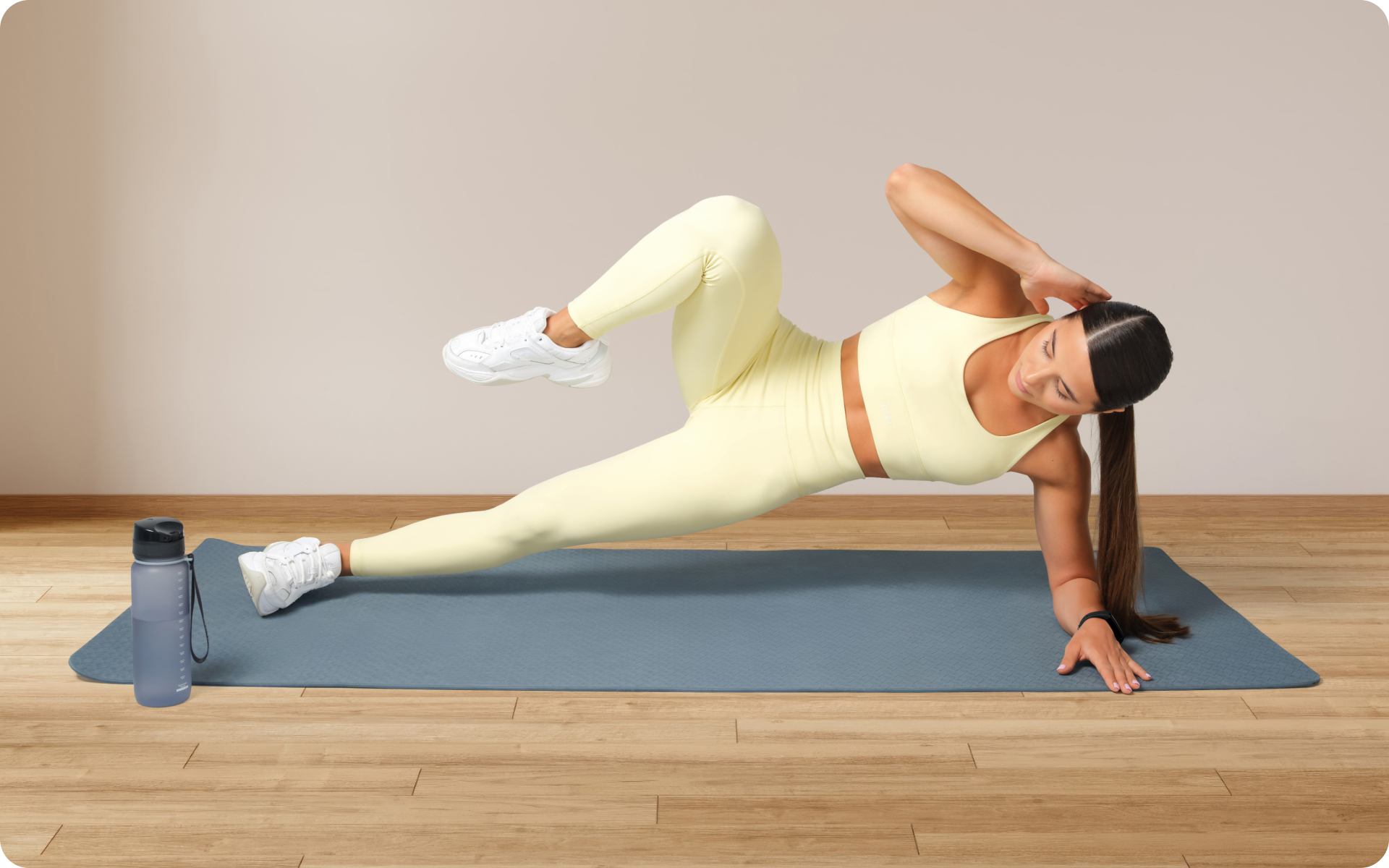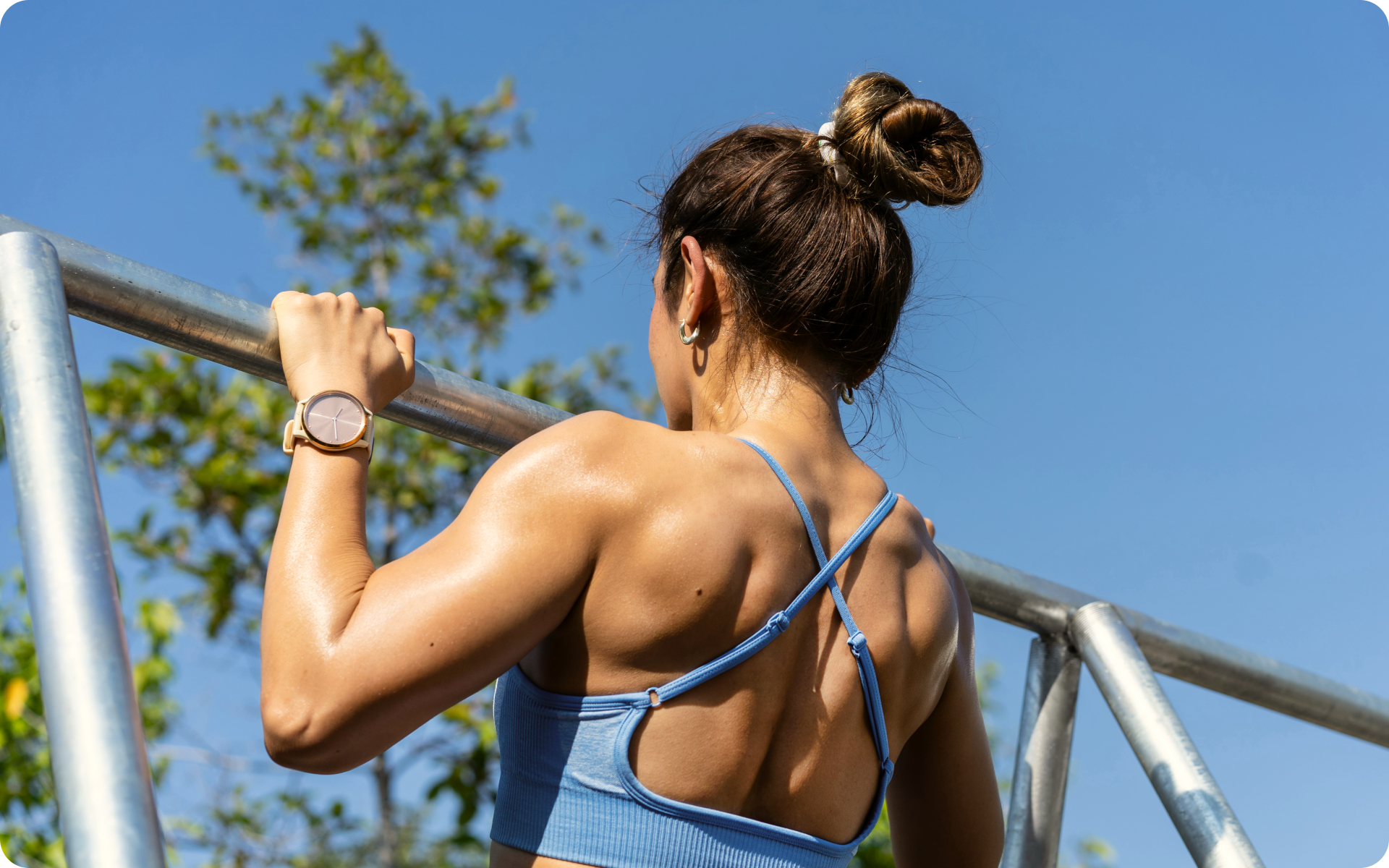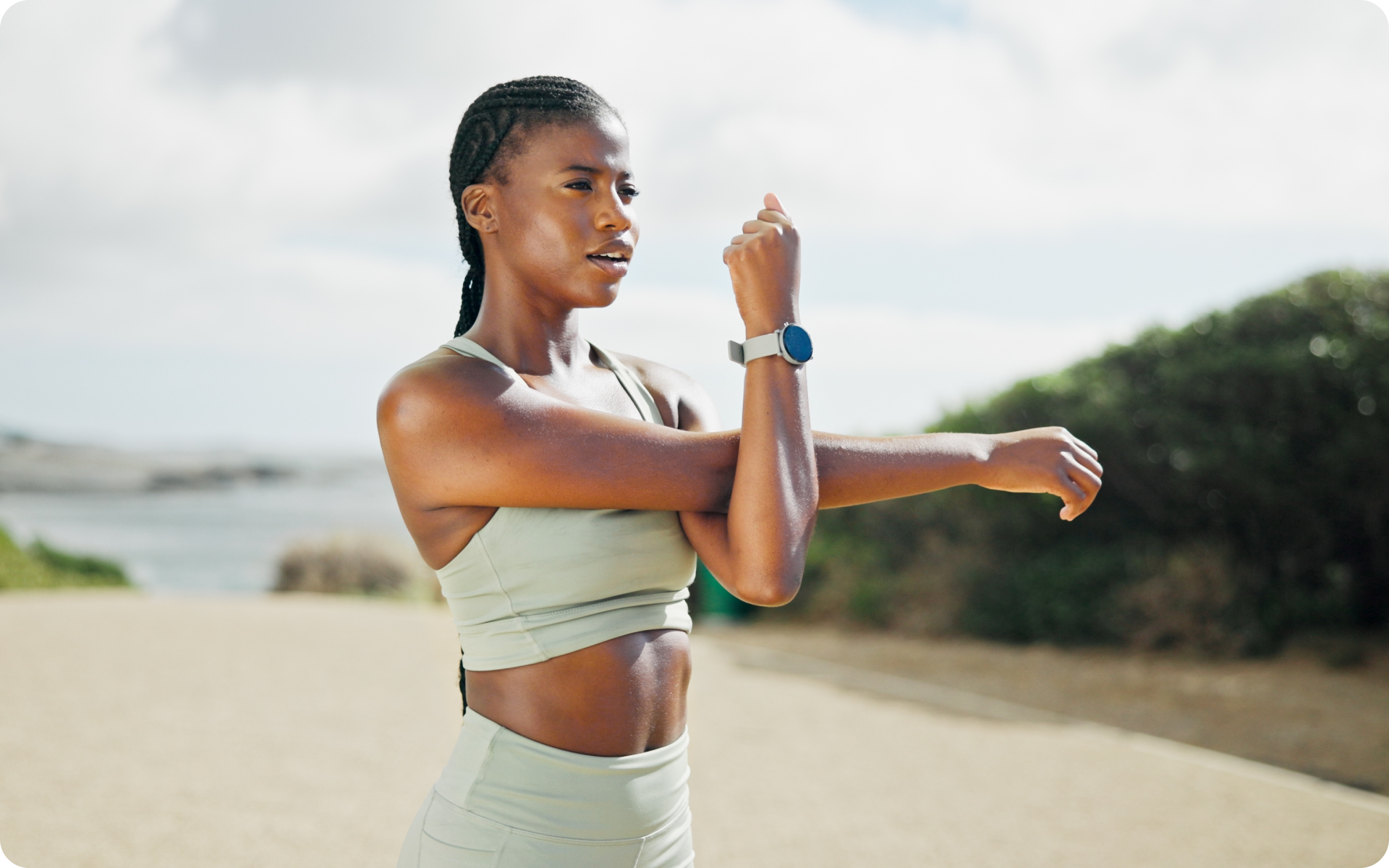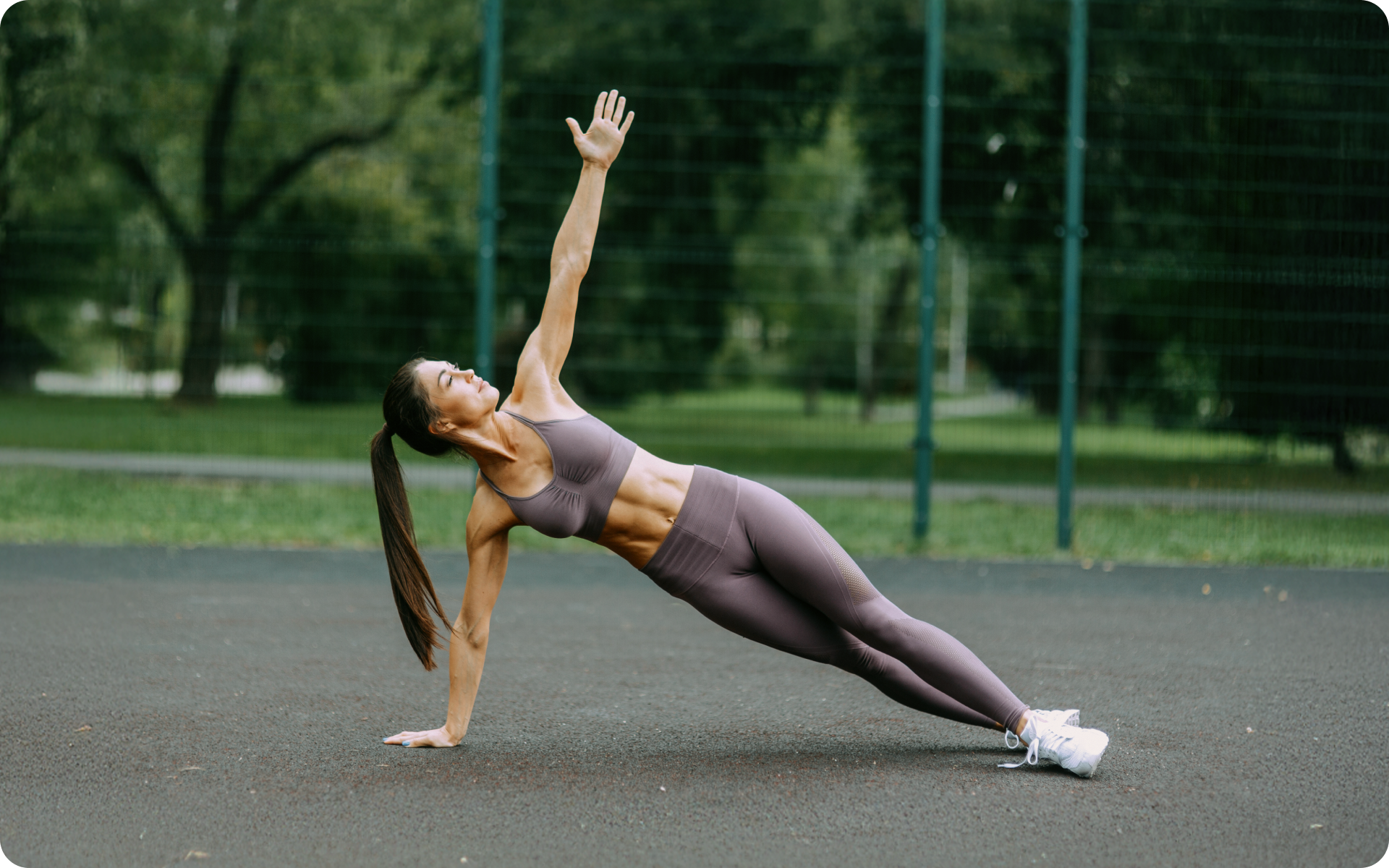Do you wish to build those gains but don’t have time to hit the gym? It’s a common misconception that you need fancy equipment to build strength. You can achieve impressive gains from the comfort of your home with a structured calisthenics weekly routine.
Calisthenics is the art of mastering bodyweight exercises to build strength, flexibility, and a physique that turns heads. Whether you’re a seasoned athlete or a beginner, calisthenics can help you get and stay strong. But where do you start? How do you design a calisthenics workout plan that pushes your limits without risking injury?
Join us as we uncover some interesting tips about this regimen.
What is the Calisthenics Weekly Routine?
The calisthenics weekly routine is a structured workout plan designed to target all the major muscle groups in your body. It is a comprehensive program that uses bodyweight exercises to improve strength, endurance, and flexibility (1).
While there isn’t one universal routine, here’s a sample training structure to give you an idea:
Monday
- Warm-up: Dynamic stretches, light cardio
- Lower Body: Squats, lunges, calf raises
- Core: Plank variations, leg raises
- Cool-down: Static stretches
Tuesday
- Warm-up: Dynamic stretches
- Upper Body: Push-ups, dips, pull-ups (or assisted variations)
- Core: Russian twists, bicycle crunches
- Cool-down: Static stretches
Wednesday
Active recovery or rest
Thursday
- Warm-up: Dynamic stretches, light cardio
- Full Body: Burpees, mountain climbers, jumping jacks
- Core: Side plank variations, flutter kicks
- Cool-down: Static stretches
Friday
- Warm-up: Dynamic stretches
- Skill Work: Modified handstands, L-sits, other progressions
- Flexibility/Cool-down: Deep stretches for all major muscle groups
Weekend
Active recovery or rest
How to Monitor Exercise Intensity During Weekly Calisthenics Routine?
For most of the exercises in the weekly calisthenics routine, performing 3 sets of each exercise is typically a good starting point. Use the modified Rate of Perceived Exertion (RPE) scale to monitor your exercise intensity (2).
The standard RPE scale uses numbers from 6 to 20, with 6 being super easy and 20 feeling impossible. But let’s face it, that’s confusing!
To simplify, we use a scale of 0 to 10 instead. Zero means you are giving no effort (such as sitting on your couch), while 10 means you are at maximal effort and can’t do any more. As a beginner, it is recommended to keep your intensity moderate, with the majority of your workout being in the 4-6/10 range on the scale and the final couple of reps in the final set being a bit higher.
What Is a Good Schedule for Calisthenics?
A good calisthenics workout plan balances exercise days with rest days, to allow your body to get stronger and recover at the same time. Here is an example of a 6-week calisthenics workout routine for the beginners:
Week 1
Day 1
Start your weekly calisthenics routine with a dynamic warm-up of 5-10 minutes of light cardio exercises, such as jumping jacks or jogging in place. This will prepare your muscles and joints for the workout ahead.
- Bodyweight Squats: Perform 3 sets of 15 repetitions, using proper form. If you need assistance, consult our squat mobility routine.
- Push-ups: Aim for 3 sets of 10 repetitions. If you need modifications, refer to our push-up progression guide.
- Inverted Rows: 3 sets of 6 repetitions
- Resistance Band Tricep Extensions: 3 sets of 10 repetitions
- Resistance Band Bicep Curls: 3 sets of 10 repetitions
- Plank: Hold for 15-30 seconds, engaging your abdominal muscles.
Day 2
Kick off your workout with 5-10 minutes of light cardio to get your blood flowing, like jumping jacks or jogging on the spot.
- Pull-ups: Complete 3 sets of 5 repetitions to work your back and biceps.
- Resistance band shoulder press: Perform 3 sets of 10 repetitions to strengthen your shoulders.
- Dips: Do 3 sets of 10 repetitions to engage your triceps and chest.
- Lunges: Complete 3 sets of 10 repetitions per leg to target your quads, hamstrings, and glutes.
- Resistance band leg curls: Do 3 sets of 10 repetitions to work your hamstrings.
- Side plank: Hold for 15-30 seconds on each side to challenge your core stability.
Read more: What Does Calisthenics Do To Your Body: A Blow-By-Blow Explanation
Day 3
Get your heart rate and muscles warm with 5-10 minutes of light cardio, like jumping jacks or jogging in place.
- Jump squats: 3 sets of 10 reps to power up your legs and glutes
- Diamond push-ups: 3 sets of 8 reps to hit your triceps hard
- Resistance Band Pull-Apart: 3 sets of 10 reps to strengthen your back and improve posture
- Lateral raises: 3 sets of 10 reps to build those shoulders
- Chest flys: 3 sets of 10 reps to sculpt your chest
- Superman holds: Hold for 30 seconds to strengthen your lower back and improve posture.
Week 2
Day 1
Begin your weekly calisthenics routine by priming your body with a 5-10 minute light cardio warm-up, like jumping jacks or jogging on the spot.
- Bulgarian split squats: 3 sets of 10 repetitions per leg to build strength and balance in your lower body.
- Decline push-ups: 3 sets of 10 repetitions to challenge your chest and triceps.
- Resistance Band Pull-Downs: 3 sets of 10 repetitions to work your back muscles.
- Hammer Curls: 3 sets of 10 repetitions to strengthen your biceps and forearms.
- Overhead Tricep Extensions: 3 sets of 10 repetitions to target your triceps.
- Plank with leg lifts: Hold a plank position and lift one leg at a time for 15-30 seconds total to engage your abs and hip extensors.
Day 2
Prepare your body with a 5-10 minute warm-up of light cardio exercises, like jumping jacks or jogging in place.
- Pull-ups: Perform 3 sets of 6 repetitions to strengthen your back and biceps.
- Narrow Hand Push-Ups: 3 sets of 8 repetitions to focus on your triceps and anterior deltoids.
- Jump lunges: 3 sets of 10 repetitions per leg to build explosive power and challenge your balance.
- Resistance Band Front Raises: 3 sets of 10 repetitions to target your anterior deltoids.
- Leg press: 3 sets of 10 repetitions to engage your quads and glutes.
- Side plank with leg lifts: Hold a side plank position on each side for 15-30 seconds, adding leg lifts to increase the intensity.
Day 3
Begin your calisthenics session with a dynamic warm-up consisting of 5-10 minutes of light cardio exercises, such as jumping jacks or jogging in place.
- Wide grip push-ups: 3 sets of 10 repetitions to emphasize your chest muscles and shoulders.
- Wall sit: Hold for 30 seconds, engaging your quads and core.
- Resistance Band Chest Press: 3 sets of 10 repetitions to strengthen your chest muscles.
- Reverse Flys: 3 sets of 10 repetitions to engage your rear deltoids and upper back.
- Curls: 3 sets of 10 repetitions to target your biceps.
- Bridge hold: Hold for 30 seconds, activating your glutes and core.
Week 3
Day 1
Begin your weekly calisthenics routine with a dynamic 5-10 minute warm-up of light cardio exercises, such as jumping jacks or jogging in place.
- Squats with a pause at the bottom: Perform 3 sets of 10 repetitions, pausing at the bottom of each squat for a few seconds to increase intensity.
- Diamond push-ups: Do 3 sets of 10 repetitions to engage your triceps and chest.
- Pull-ups with isometric hold at top: Perform 3 sets of 5 repetitions, holding at the top of each rep for a few seconds to increase muscle engagement.
- Bulgarian split squats with jump and pulse: Perform 3 sets of 10 repetitions on each leg, adding a jump at the top and a pulse at the bottom to challenge your balance and power.
- Resistance Band Lateral Raises with Slow Eccentric: Complete 3 sets of 10 repetitions, focusing on slowly lowering the band back down for each repetition.
- Plank with hip drop: Hold a plank position and slowly drop your hips to each side for 30 seconds, engaging your obliques and core.
Day 2
Begin by activating your muscles with a 5-10 minute warm-up of light cardio exercises such as jumping jacks or jogging in place.
- Plyometric Lunges with a Jump: Perform 3 sets of 10 repetitions on each leg, adding a jump at the top of each lunge to increase power and explosiveness.
- Pull-Ups with Slow Eccentric: Perform 3 sets of 5 repetitions, focusing on slowly lowering yourself back down for each repetition.
- Resistance Band Push-Ups with a Pause at the Bottom: Do 3 sets of 8 repetitions, pausing for a moment at the bottom of each push-up to increase intensity.
- Single Leg Deadlift: Do 3 sets of 10 repetitions on each leg to improve balance and stability while working your hamstrings and glutes.
- Side Plank with Leg Lift and Knee Pulse: Hold a side plank position on each side for 30 seconds, adding leg lifts and knee pulses to engage your obliques and hip flexors.
Day 3
Begin by activating your body by having a 5-10 minute warm-up of light cardio exercises, such as jacks or jogging on the spot.
- Plyometric Push-Ups: Do 3 sets of 10 repetitions, pushing yourself up explosively from the ground to increase power and intensity.
- Wall Sit with Heel Lift: Hold a wall sit for 30 seconds, adding heel lifts to increase the challenge and engage your calves.
- Resistance Band Pull-Apart with Slow Eccentric: Do 3 sets of 10 repetitions, focusing on slowly returning to the starting position for each repetition.
- Resistance Band Chest Flys with an Isometric Hold at the Top: Complete 3 sets of 10 repetitions, holding the contraction at the top of each rep for a few seconds.
- Hammer curls: Perform 3 sets of 10 repetitions to target your biceps and forearms.
- Plank with reach: Hold a plank position for 30 seconds while alternating reaching forward with each arm.
Remember, a calisthenics workout plan for beginners at home should include exercises that target all the desired muscle groups. Identify one or two exercises for each muscle group, including the back, chest, shoulders, and lower body. As you become stronger, your body will need more challenging variations to continue improving. Weekly calisthenics routine is a great way to strengthen the body.
Intense sweat sessions, working weight loss tips, lip-smacking recipes come in one package with the BetterMe: Health Coaching app—all at your fingertips, start transforming your life now!
Why Should You Adhere to Your Calisthenics Weekly Routine?
Staying consistent with your weekly calisthenics routine is crucial for achieving long-term success. Whether you’re a beginner or an experienced athlete, integrating calisthenics into your fitness regimen can lead to fantastic results only when you give it the opportunity to. Without consistency, progressive overload, and adequate rest and recovery, it will be challenging to reach your full potential.
How to Plan Your Calisthenics Weekly Routine Correctly?
Here are some tips that could help you to create a well-rounded calisthenics routine:
- Assessing your fitness levels
- Deciding your fitness goals
- Creating an environment that allows doing workouts
- Crafting a comprehensive training plan
- Applying progressive overload
Even though these tips help create a weekly calisthenics routine, you should consult a registered trainer before starting, especially if you are a senior or have a prior medical condition. Progress slowly while building sufficient strength, as this helps to avoid injuries.
Does Calisthenics Weekly Routine Need Rest Days?
Don’t consider rest as an enemy when creating your weekly calisthenics routine schedule. Some people mistakenly think they can exercise daily and make progress, but often delays progress because you are not allowing your body time to adequately recover. It is important to remember that adaptations occur during rest periods, not during your workouts. By slowing your body’s ability to recover, you slow your ability to improve.
Common signs of overtraining syndrome include fatigue, decreased performance, irritability, excessive and persistent soreness, sleep and appetite changes, increased anxiety, and more. If you notice these symptoms creeping into your life as you increase training frequency or intensity, back off a bit to allow your body the chance to recover.
Read more: Setting Up a Daily Calisthenics Routine That Works
Should I Do Calisthenics in the Morning or Evening?
The best time to workout is the time that fits best into your schedule. Although there is some research suggesting that late afternoon or evening training may lead to greater muscle growth and strength gains compared to morning training, this is far from set in stone and more research is needed.
FAQs
Is calisthenics enough to stay fit?
Yes, calisthenics can even replace the gym if you’d like it to, which is great news for those looking to save on time and budget. With calisthenics, you can build strength, gain muscle, and become more active. Calisthenics training contains movements to target every muscle group, helping you build a well-rounded, athletic physique with balanced strength and agility.
Is it reasonable to do calisthenics once a week?
Exercising one time per week is certainly better than not exercising at all, and you can still receive some positive benefits from a single training session each week! However, to see significant results you will probably need to be a bit more consistent than that. Aim for 2-5 training days per week if possible.
Is calisthenics better than gym?
Whether calisthenics or traditional weight training is “better” depends on your goals and preferences. If the price of a gym membership is not feasible, you have no gyms nearby, or you simply do not enjoy the gym environment, then calisthenics will be better for you because you are more likely to enjoy it and stick with it. On the other hand, traditional weight training offers more exercise options due to the ability to use free weights, cables, machines, and a variety of other equipment, in addition to performing calisthenic exercises to enhance or supplement your training. Progressive overload is typically easier to achieve with weight training because you can very gradually and incrementally add resistance.
There is not a single right answer to the question. Both options can produce excellent results, so it just comes down to what you prefer. Many people incorporate some of both into their strength training routine!
Are 100 pushups a day terrible?
While doing 100 push-ups daily can boost upper body strength and endurance, it might not be the most sustainable approach. This intense routine could lead to overuse injuries, muscle imbalances, and a plateau in your progress.
Summary
A calisthenics weekly routine can keep you on track and help you get in shape. Apart from the physical rewards, you may also experience significant improvements in how you feel. As with all workout routines, you should try to increase the volume and intensity of your training progressively. You should increase the sets/reps, perform more challenging exercise variations, vary your training structure, change training tempo, or some combination of these options. And let us not overlook the importance of rest during the weekly sessions. If you are a newbie and don’t quite know how to create a well-rounded calisthenics plan, get assistance from a registered trainer or seek online help from certified platforms.
DISCLAIMER:
This article is intended for general informational purposes only and does not serve to address individual circumstances. It is not a substitute for professional advice or help and should not be relied on for making any kind of decision-making. Any action taken as a direct or indirect result of the information in this article is entirely at your own risk and is your sole responsibility.
BetterMe, its content staff, and its medical advisors accept no responsibility for inaccuracies, errors, misstatements, inconsistencies, or omissions and specifically disclaim any liability, loss or risk, personal, professional or otherwise, which may be incurred as a consequence, directly or indirectly, of the use and/or application of any content.
You should always seek the advice of your physician or other qualified health provider with any questions you may have regarding a medical condition or your specific situation. Never disregard professional medical advice or delay seeking it because of BetterMe content. If you suspect or think you may have a medical emergency, call your doctor.
SOURCES:
- The effects of a calisthenics training intervention on posture, strength and body composition (2017, researchgate.net)
- Validity and reliability of the session RPE method for monitoring exercise training intensity (2006, ajol.info)
- Evidence mounts on the benefits of strength training (2022, hsph.harvard.edu)
- Overtraining Syndrome (2012, ncbi.nlm.nih.gov)

